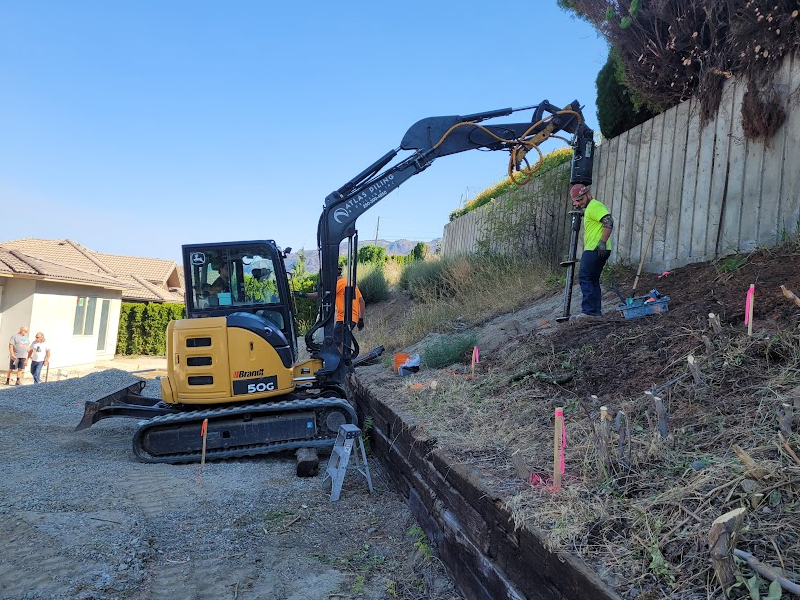
Helical piles are advanced foundation components designed to transfer structural loads to deeper, more stable soil layers. Comprising a steel shaft with helical plates welded to it, these piles securely anchor into the ground upon installation. This method is highly adaptable, suitable for diverse soil conditions such as expansive soils and locations with high water tables, serving both residential and commercial construction needs effectively.
Load Testing
Load testing is a crucial step in validating the reliability of helical pile installations. Before full installation, engineers rigorously test each pile by applying controlled axial compression, tension, or lateral loads. These tests assess how well the piles withstand anticipated structural loads, providing essential data on factors like load displacement and settlement. Engineers use this information to refine installation parameters such as torque and depth, ensuring each pile meets or exceeds required safety and regulatory standards.
Beyond validation, load testing serves as a proactive quality assurance measure. It allows engineers to detect and address potential issues early, enhancing the overall stability and durability of the foundation. By confirming load-bearing capacities upfront, load testing mitigates risks of future settlement or structural failure, ensuring that helical pile installations provide reliable support for buildings and structures over their lifespan.
Spacing Requirements
Determining the spacing between helical piles is crucial for ensuring the stability and long-term performance of foundations. Engineers meticulously consider several factors when determining optimal placement. Soil conditions significantly impact spacing. Cohesive soils allow for closer pile spacing, whereas non-cohesive soils require wider spacing to distribute loads effectively. Engineers also assess the soil’s bearing capacity at various depths to strategically place piles where they can provide optimal support.
Building loads and structural design play pivotal roles in spacing decisions. Higher loads necessitate closer pile spacing to evenly distribute weight and prevent settlement issues. Engineers strategically place piles under load-bearing elements such as walls and columns to directly support structural loads. Environmental factors and local building codes further influence spacing, with seismic zones often requiring closer pile placement for enhanced lateral support. By meticulously planning pile spacing based on these factors, engineers ensure that helical pile installations are not only structurally sound but also compliant with safety standards, providing durable foundation solutions for diverse construction projects.
Design Considerations
When designing helical pile systems, engineers consider a myriad of factors to ensure the foundation’s effectiveness and longevity. Soil conditions, expected loads, environmental factors, and local building codes all inform the design process. Advanced software and engineering calculations enable engineers to customize the depth, diameter, and configuration of each pile to maximize its load-bearing capacity. By tailoring the design to specific project requirements, engineers can optimize the foundation’s performance while adhering to safety standards and regulatory requirements. This customized approach ensures that helical piles provide a reliable and durable foundation solution for a wide range of construction applications.
By understanding the importance of load testing, spacing requirements, and customized design, you can ensure a stable and durable foundation for your building. When searching for “helical pile installers near me,” prioritize expertise and experience to guarantee the success of your project. Contact local professionals today to discuss how helical piles can benefit your next construction endeavor.
Incorporating helical piles into your construction plans can significantly enhance the stability and longevity of your building’s foundation. Whether you’re building a new home, renovating an existing structure, or addressing foundation issues, helical piles offer a versatile and reliable solution.
For more information about Commercial Drilling Service Bc and Underpinning Services Bc please visit:-ATLAS PILING

